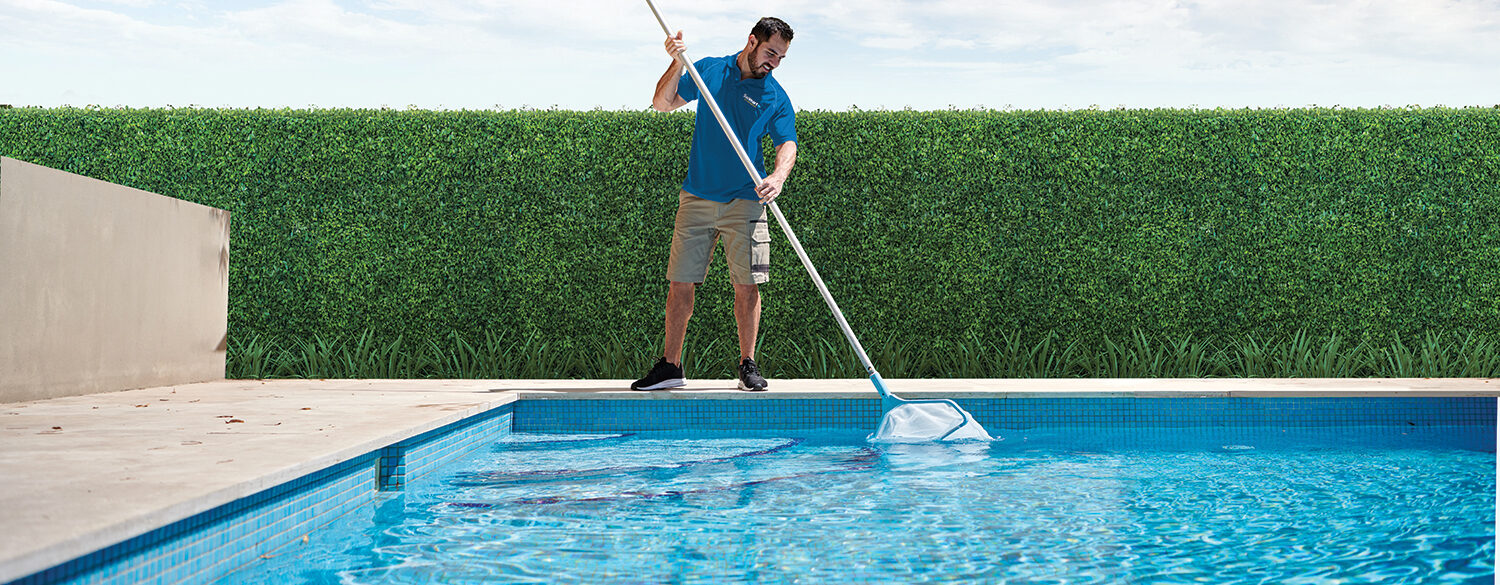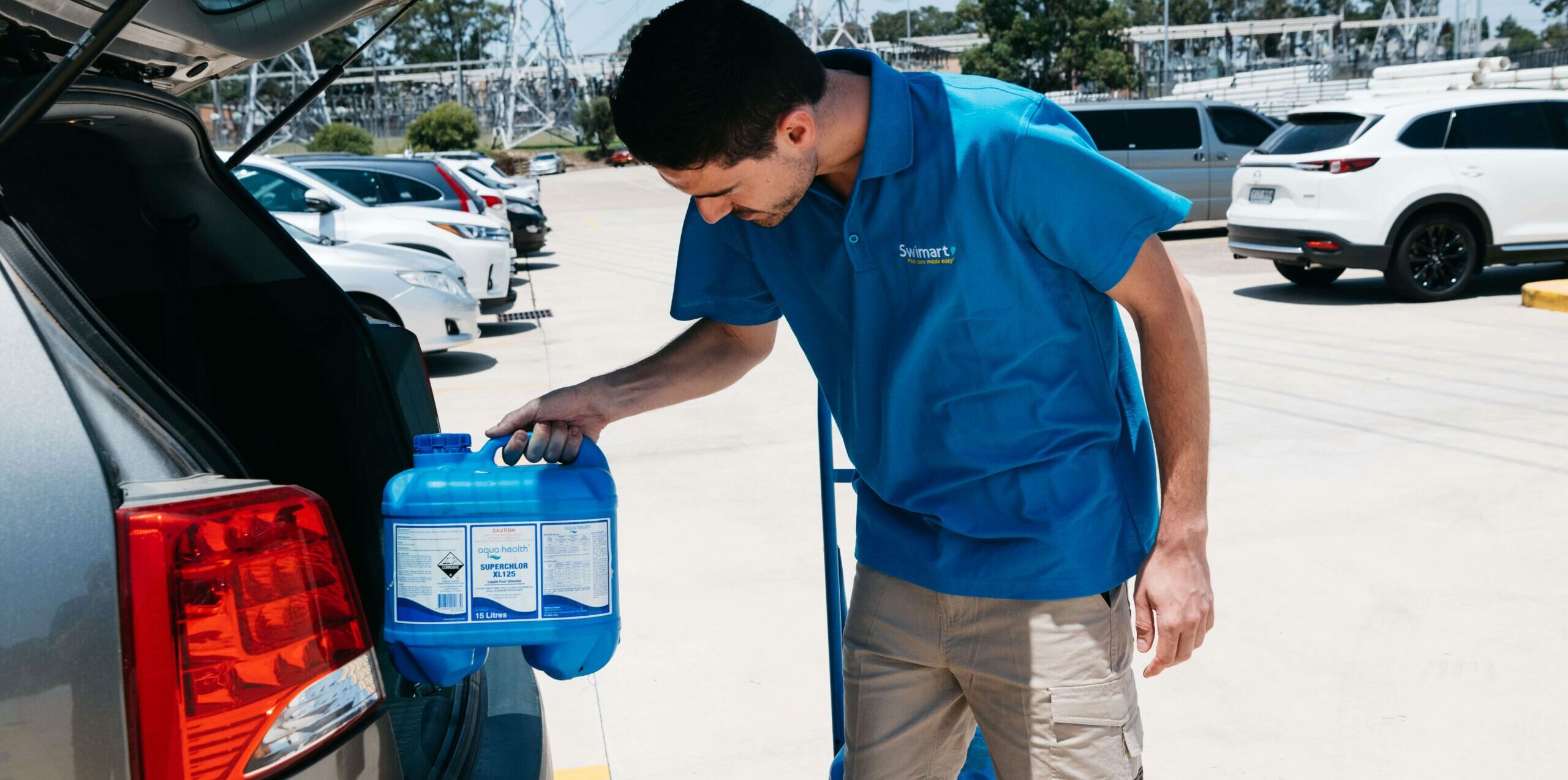DIY Tips
WILD WEATHER, GREEN POOLS
3 January 2012
Summer is often marked by high temperatures and, in certain regions, humidity – not to mention heavy rains and thunderstorms. That can cause problems for swimming pool owners. But there’s no need to worry! With a little extra TLC, pool owners can keep the water in pristine condition.
Top tips to keep your pool in tip top condition
"When these weather conditions occur, the issues that pool owners often complain about are green pools, dirt, leaves and garden beds washed into pools," says Chris Fitzmaurice, Swimart's national manager. "Heavy rain dilutes pool chemicals, especially salt and chlorine, which causes the pool to turn green. This means the water is not sanitised or healthy, so it's vital to address this.
"And with the high humidity that many parts of Australia experience, algal blooms can develop, as they thrive in the heat and multiply rapidly on warm sunny days. In addition to clogging up sanitation pathways in the water, algae can clog up the pores in a filter, decreasing filter effectiveness and requiring more backwashing or medium replacement."
To ensure pool owners can keep their pools pristine during the changes in weather, here are some top tips:
After periods of heavy rain
• Pool water needs to be re-balanced. Swimart recommends taking a sample of pool water from elbow depth (as this is more circulated water) and taking it in to a Swimart store for a free computerised water test and to be prescribed the appropriate solution.
• Drop the water level to below the top of the weir door so it and the skimmer basket can skim surface debris. For debris that has dropped to the bottom of the pool, scoop out as much as possible, then use either of two chemicals - Supa-Floc, which is designed for dirty but not filthy pools, or Drop Out, for heavy duty cleaning. The chemicals in these two products cause the dirt to bind to them and drop to the bottom of the pool so they can be easily vacuumed away.
• If the pool is particularly dirty, increase the hours of filter operation until the pool is clear. The time is dependent on the size of the pool.
• In times of heavy rainfall, there is more demand for algaecides which kill algae, as these can be diluted by the extra fresh rainwater.
• With about 80 per cent of pools now being salt water, there is more demand for salt, as this makes the pool saline and creates a natural chlorination. Chlorine is only added when the water gets really dirty.
• Backwash the filter on your pool to optimise filter efficiency.
• Check and empty the skimmer basket and the hair and lint filter located in front of the pump to ensure they are clear of debris, as they can tear when they get too full.
For algal blooms
• Chlorine is the best defence against algae – particularly during hot weather. And if you have a salt pool, you can use the 'super chlorinate' button on your salt chlorinator to help fix the problem. The hotter the weather gets, the more the pool is used and, as a result, more chlorine is required to keep it sanitised. Pools aren't cooling down overnight, so the chlorine demand remains high.
• Another demand on pool water is the level of phosphates in the water. Algae love phosphates and feed on them. Phosphates are introduced to the pool primarily via bird and bat droppings, roof water added into the pool, and swimming costumes which have been washed in detergent containing phosphates. "Chlorine alone can't eliminate phosphates," Chris explains. "However, a chemical called Phosphate Starver will eradicate the phosphates so the chlorine can work on killing the algae."
• If the pH level is too high, scaling can form on the surface of a swimming pool and salt chlorinator. This can be addressed by adding acid to the water. Conversely, if the pH level is too low, the water will start to hurt eyes and skin and make swimmers feel itchy. It can also etch away the surface of the pool. This can be fixed by adding 'buffer' or alkali. Correct pH levels make the pool comfortable to swim in. If pH levels are incorrect, it can affect the efficiency of the chlorine in the pool.


 AUS
AUS NZ
NZ 


